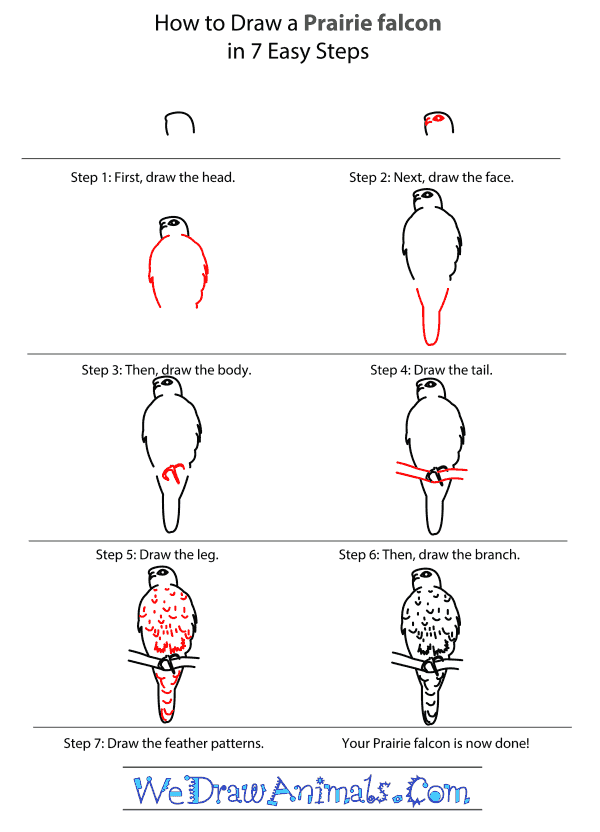In this quick tutorial you'll learn how to draw a Prairie Falcon in 7 easy steps - great for kids and novice artists.
The images above represent how your finished drawing is going to look and the steps involved.
Below are the individual steps - you can click on each one for a High Resolution printable PDF version.
At the bottom you can read some interesting facts about the Prairie Falcon.
Make sure you also check out any of the hundreds of drawing tutorials grouped by category.
How to Draw a Prairie Falcon - Step-by-Step Tutorial
Step 1: The first step in drawing the prairie falcon is to draw its head, which is slightly square shape.
Step 2: Next, draw the face. Falcons have large eyes and a sharp curved beak.
Step 3: Then draw the body; it has a large chest. But leave room for the tail.
Step 4: The next step is to draw the tail. It has a large tail to help it fly.
Step 5: Next, draw the leg. Falcons have three front toes with very sharp claws.
Step 6: Then draw the branch that it is sitting on, try to have the toes wrap around the branch.
Step 7: The last step is to add the feather pattern to the body with black spots.
Interesting Facts about the Prairie Falcon
Prairie falcons (Falco mexicanus) is a medium-sized falcon that can be found in the American West. This is the most popular species of falcon, due to its large population. Even though it can be hard to train and unpredictable, it is the most popular bird used in falconry(humans who hunt with the help of falcons).
Did you know?
- Like all falcons, females are bigger than males.
- The prairie falcon is grey-brown, with a pale white underside covered in black spots and streaks.
- Their diet is mostly small mammals and birds in flight. The prairie falcon will fly low to detect its prey and then dive in to capture it.
- Prairie falcons can fly up to 45 miles per hour, and usually fly faster when they are chasing prey.
- Instead of building nests, prairie falcons nest in cliffs, often sharing their nesting grounds with ravens, golden eagles and red-tailed hawks.
- Like most falcons, the female will incubate the eggs (sit on them until they hatch), while the male will bring food to the nest. Prairie falcons usually lay an average of four eggs.
Lesson plan note: Discuss the reasons why female falcons may be larger than males.








